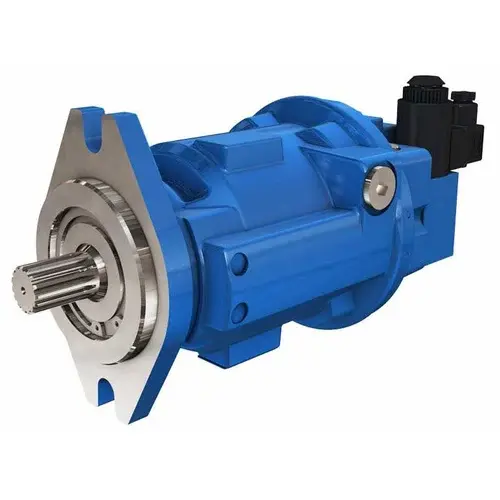Key Features of Hydraulic Motor
1. Types and Motion Output of Hydraulic Motor
Hydraulic motors are available in gear, vane, and piston configurations to support various torque and speed requirements. They provide either rotary or linear motion, depending on the system’s setup, making them ideal for a wide range of marine applications.
2. Construction and Materials
Manufacturers use high-strength steel and corrosion-resistant alloys to ensure durability. Sealed housings, hardened shafts, and marine-grade bearings protect the motor from saltwater exposure, vibration, and thermal stress.
3. Torque and Speed Control
These motors deliver high starting torque with smooth acceleration, even under fluctuating loads. Adjustable displacement models allow fine control over speed and rotation direction, which is essential for applications like crane operation and rudder control.
4. System Integration and Compatibility
Hydraulic motors integrate easily with power packs, pumps, valves, and actuators using standardized ports and couplings. Their compact design fits well within tight engine rooms or deck machinery, offering reliable operation without occupying excessive space.
5. Cooling and Lubrication Efficiency
Most units feature internal flow channels for oil circulation, which helps maintain optimal temperature and reduce friction. Proper cooling extends component life and maintains consistent motor performance during extended usage.
6. Noise and Vibration Reduction
Engineers design these motors with low-noise and low-vibration features to suit vessel environments. Anti-cavitation systems and precision-balanced rotors reduce acoustic disturbance and mechanical stress.
7. Maintenance and Accessibility
Hydraulic motors are built for easy access to seals, bearings, and internal components. Crews can perform inspections, lubrication, and part replacements with minimal disassembly, reducing downtime and maintenance cost.
8. Compliance and Marine Certifications
All motors comply with ISO 4413 standards and are approved by DNV, ABS, and Lloyd’s Register for marine application. They meet safety, performance, and installation guidelines required for use on seagoing vessels and offshore platforms.




